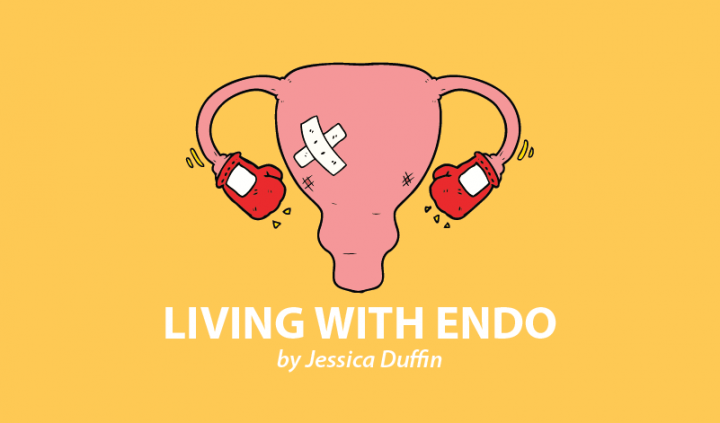Note: If you are emotionally triggered by eating plans or elimination diets, the subject of this week’s column is an in-depth look at an elimination plan and may not be suitable for you.
A week ago, I started my elimination diet for interstitial cystitis. And what a week it’s been. I can’t say it’s necessarily gone as planned.
To give you some context, here’s what I can eat:
Vegetables
Asparagus, broccoli, sprouts, cabbage, carrots, cauliflower, celery, chives, cucumbers, green beans, collard greens, kale, mustard, Swiss chard, bok choy, lettuce and most salad greens, mushrooms, onions, pumpkin, radishes, rutabaga, turnips, yellow squash, zucchini, acorn squash, and butternut squash.
Fruit
Gala, Fuji, and Pink Lady apples, homemade applesauce with Gala, Fuji, or Pink Lady apples, blueberries, blackberries, coconut, dates, pears, and watermelon.
Fats
Olives, olive oil, and coconut oil.
Herbs and spices
Parsley, allspice, almond extract, anise, basil, caraway seed, coriander, dill, fennel, garlic, mace, marjoram, oregano, poppy seeds, rosemary, vanilla extract, sage, sea salt, thyme, and tarragon.
Many nutritious and beautiful foods are on the list, but there are also a lot that I can’t eat, particularly since I’m used to plant-based foods. This means it’s a very restrictive, albeit temporary, diet.
So what can’t I eat? The list is long, but some of the foods I’ve eliminated specifically for my bladder pain include:
Fermented and cultured foods like yogurt, sauerkraut, kefir, kombucha, kimchi, etc., dried fruit, soured foods, yeast, nuts, avocados, eggplant, spinach, tomatoes, bananas, chocolate, papaya, pineapple, strawberries, black tea, green tea, grains (other than quinoa), peppers, potatoes, vinegar, citrus fruits, rhubarb, beetroot, raspberries, and sweet potatoes.
Other foods are off-limits for endometriosis in general, but I already avoid them anyway, so the change isn’t very drastic. These include caffeine, dairy, gluten, soy, corn, peanuts, alcohol, trans fats, and processed flours and foods.
Additional foods on the list to avoid aren’t necessarily relevant to me, such as processed or smoked meat, as I don’t eat meat anyway.
Remember that every body is different, and this plan has been tailored for me and is very restrictive. If you want to try an elimination diet for your endometriosis or bladder pain, it’s best to do so with the support of a dietitian, health coach, or nutritionist, or at least with a book or a course.
So what happened on week one of the elimination diet?
Well, firstly, my symptoms blew up. Yep, really. I had one afternoon of low bladder pain and one night in which I slept through without waking in pain. The rest of the time, I had chronic bladder pain ranging in severity. Each night, I woke up needing to urinate and then was left with residual pain that kept me awake until it was time to get up. It was a tough week to get through.
In the first two days, I did some research and identified that turmeric, ginger, and cinnamon might be the culprits behind the pain, so I eliminated those as well (with much sadness). This appeared to give me temporary relief on Wednesday afternoon, and I slept through the night that evening. However, by Thursday morning, the pain was back and I was really wracking my brain.
The thing about histamines, and especially oxalates, is that there is much debate about the foods that contain the compounds or stimulate their production. For example, some practitioners eliminate blackberries, while others keep them in. I had a brief chat with my nutritionist about this, and she said that it’s about weighing the risks versus the benefits. On a diet this restrictive, it’s important to keep foods like blackberries in when they’re packed with antioxidants. Essentially, an entirely histamine-free diet isn’t possible, but a low histamine diet is.
This led me to wonder, were blackberries the culprit? Could it be stevia? Beans? Or even oxalate dumping? Oxalate dumping is when the body essentially cleanses itself of oxalates and ends up “dumping” way too much in our system for us to handle, creating a flare-up of symptoms. This can happen when we go cold turkey on oxalates as I have.
I was already struggling with the restrictions of this diet. Feeling overwhelmed at the idea of eating this way for a month and the length of time it will take to reintroduce foods one by one, the idea of cutting more out was too much.
With a desperate plea for help, I emailed my nutritionist. We’re jumping on a call this afternoon, and hopefully, we’ll begin to unravel this complex web of symptoms and causes.
Who knows what next week will bring?
***
Note: Endometriosis News is strictly a news and information website about the disease. It does not provide medical advice, diagnosis, or treatment. This content is not intended to be a substitute for professional medical advice, diagnosis, or treatment. Always seek the advice of your physician or other qualified health provider with any questions you may have regarding a medical condition. Never disregard professional medical advice or delay in seeking it because of something you have read on this website. The opinions expressed in this column are not those of Endometriosis News or its parent company, BioNews Services, and are intended to spark discussion about issues pertaining to endometriosis.

